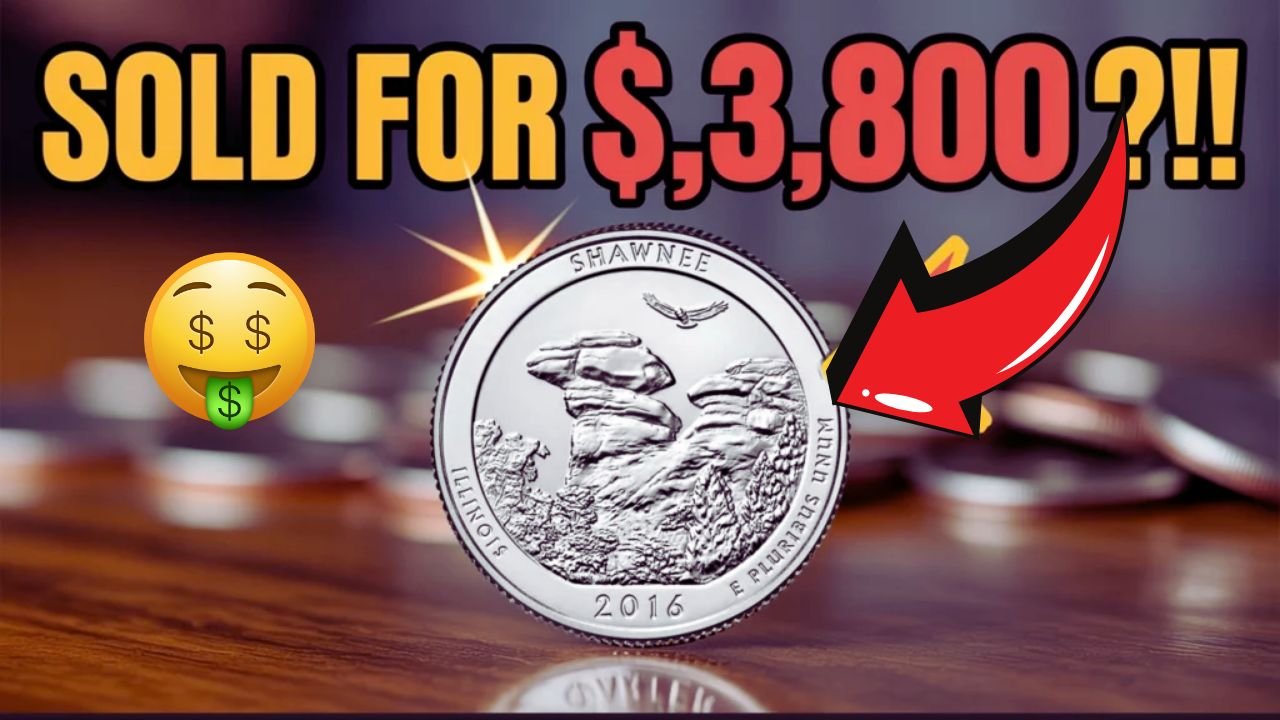In 2016, the U.S. Mint released the Shawnee Quarter as part of the America the Beautiful series, celebrating the scenic Shawnee National Forest in Illinois. This quarter, with its striking design, is a favorite among collectors, but some are worth far more due to rare errors like the reverse cud. One such coin reportedly sold for $3,800 at auction, sparking excitement among coin enthusiasts. If you have a stash of quarters, you might be holding a valuable piece without knowing it. Here’s a simple guide to spotting a rare 2016 Shawnee Quarter with a reverse cud.
What Is the Shawnee Quarter?
The 2016 Shawnee Quarter features George Washington’s portrait on the front and a red-tailed hawk soaring over Camel Rock in Shawnee National Forest on the back. The forest, spanning over 265,000 acres in Southern Illinois, is known for landmarks like Little Grand Canyon and Cedar Lake. The U.S. Mint produced these quarters in Philadelphia (P), Denver (D), and San Francisco (S), with some in clad (copper-nickel) and others in 90% silver for collectors. About 400 million were minted across these locations, but specific errors make certain coins extremely valuable.
Understanding the Reverse Cud Error
A reverse cud error happens when a piece of the minting die breaks, leaving a gap that fills with metal during striking. This creates a raised, irregular blob or bump on the coin’s reverse side, often near the edge or design elements like the hawk or lettering. The size and placement of the cud affect its value, with larger or more noticeable cuds fetching higher prices. For example, a 2016 Shawnee Quarter with a prominent reverse cud sold for $3,800 due to its rarity and clear error. Other errors, like die chips or doubled dies, can also increase value but are less dramatic than a cud.
| Error Type | Description |
|---|---|
| Reverse Cud | Raised bump from a broken die, often near edge |
| Die Chip | Small dents from die surface breaks |
| Doubled Die | Overlapping design from multiple strikes |
How to Identify a Reverse Cud
To spot a rare 2016 Shawnee Quarter, grab a magnifying glass and check the reverse side. Look for a raised, irregular bump, especially around the hawk, Camel Rock, or inscriptions like “SHAWNEE” or “ILLINOIS.” The cud might look like extra metal or a blob that doesn’t blend with the design. Check the mint mark (P, D, or S) under Washington’s neck to know where it was made. Silver quarters from San Francisco, weighing about 6.25 grams, are rarer than clad ones at 5.67 grams. Compare the coin’s edge: silver coins lack the copper stripe seen in clad versions.
| Feature | How to Check |
|---|---|
| Mint Mark | Look for P, D, or S under Washington’s neck |
| Weight | Silver: ~6.25g, Clad: ~5.67g |
| Edge | Silver has no copper stripe |
Steps to Verify and Sell
If you find a quarter with a reverse cud, handle it carefully to avoid damage. Don’t clean it, as this can lower its value. Store it in a plastic coin holder to protect it. Take it to a professional grading service like PCGS or NGC to confirm the error and grade its condition. Coins graded MS-65 or higher, especially with clear cuds, can fetch top dollar. To sell, consider reputable auction houses, trusted coin dealers, or online platforms like eBay, but ensure it’s graded first to maximize profit. The $3,800 sale of a Shawnee Quarter shows the potential reward for spotting this error.
Start Searching Your Coins
The 2016 Shawnee Quarter with a reverse cud is a rare find, but with millions still in circulation, you might discover one in your change or coin collection. As interest in coin collecting grows, especially for America the Beautiful quarters, these error coins are gaining attention. Take a moment to inspect your quarters with a magnifying glass. You could uncover a small piece of history worth thousands, just waiting to be found in your pocket or piggy bank.
